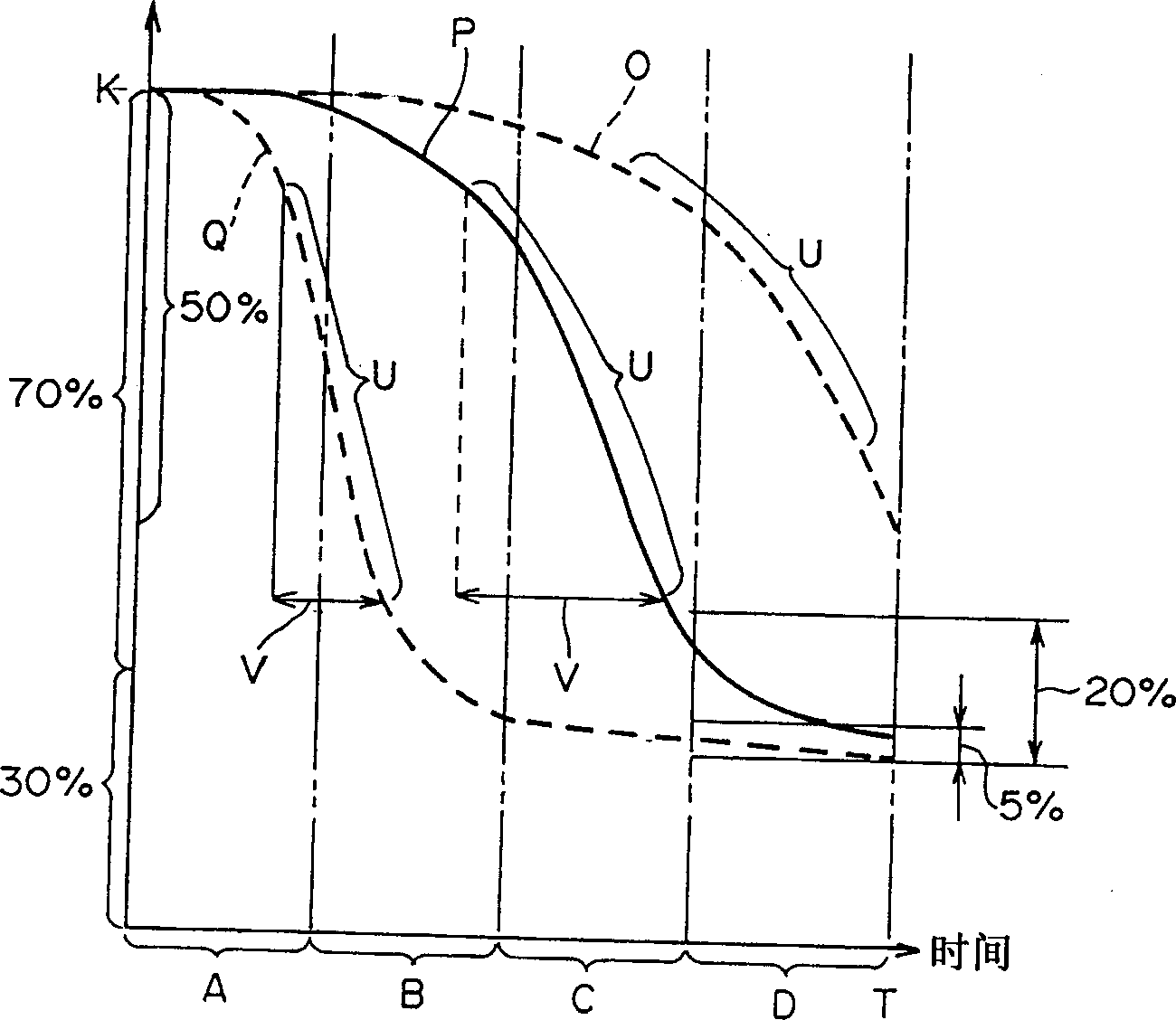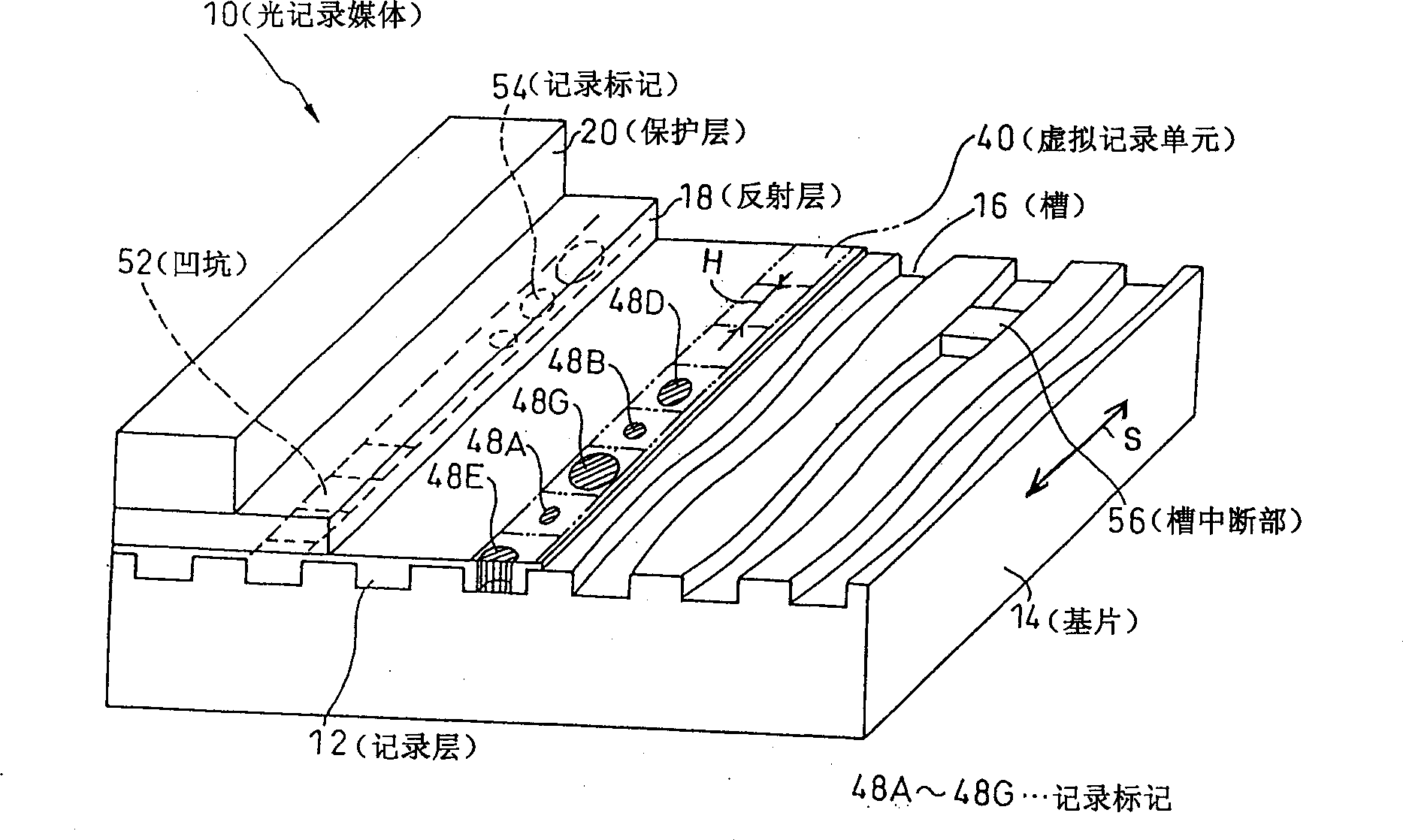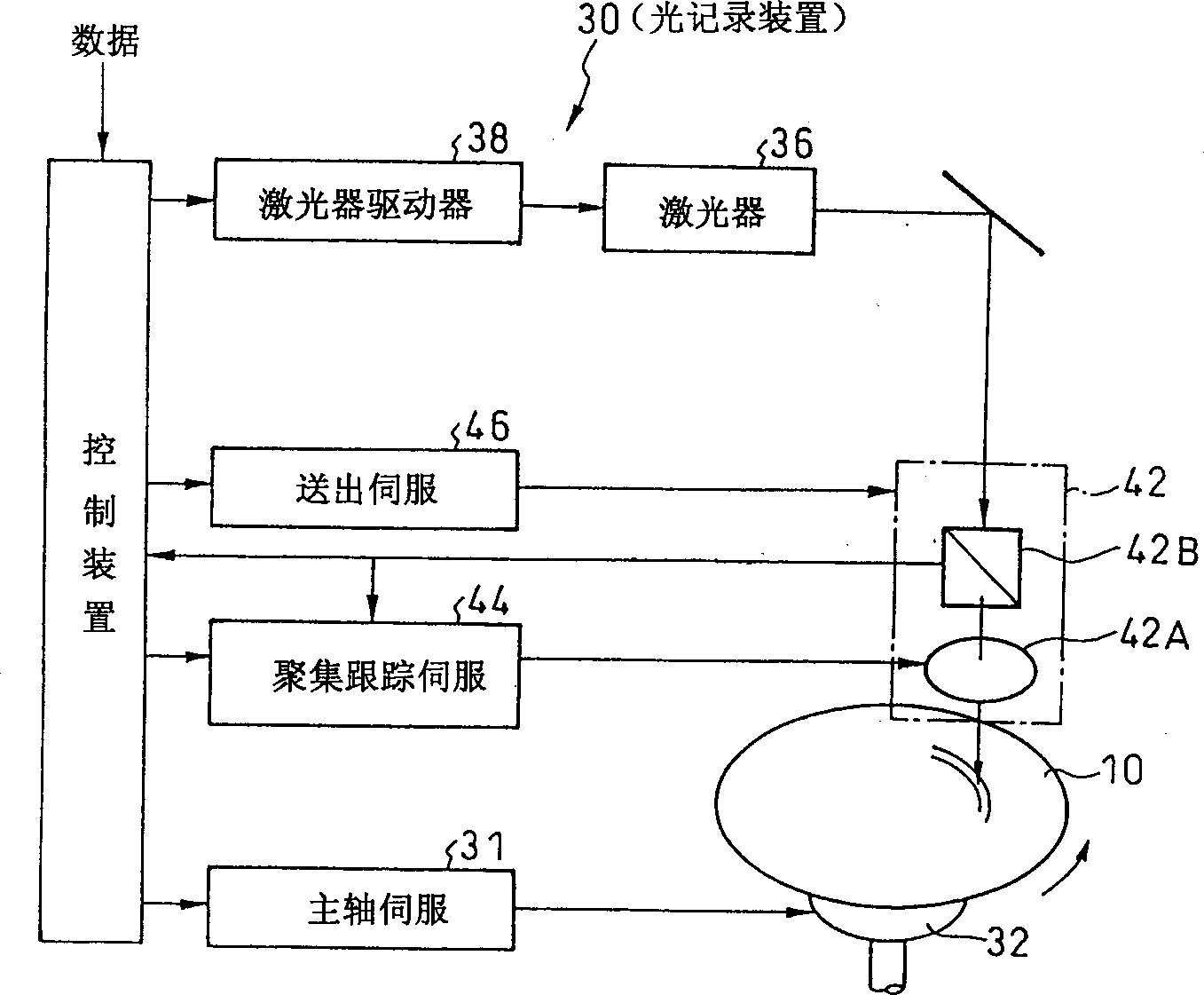Optical record medium and optical record method thereof
An optical recording medium, optical recording technology, applied in the direction of optical recording carrier, optical recording/reproduction/erasing method, optical recording head, etc., capable of solving problems such as difficulties in multi-level recording
- Summary
- Abstract
- Description
- Claims
- Application Information
AI Technical Summary
Problems solved by technology
Method used
Image
Examples
Embodiment 1
[0078] 7-stage irradiation time was set, and the laser beams satisfying the above-mentioned conditions (1)-(3) were multi-stage recorded respectively (3 types of reference powers: 10mW, 11mW, and 12mW).
[0079] As a result, recording marks written by each reference power can be reliably read. The jitter value of this signal is also good. In addition, according to the respective reference powers, when the laser beam is irradiated to the virtual recording unit within the total permissible irradiation time, the change state of the light reflectance with the elapsed time is as follows: Figure 6 (solid lines A, B, C).
[0080] Such as Figure 6 As shown, overall the final light reflectance is reduced by more than 70% of the initial reflectance K. In addition, in the 1 / 4 section at the end of the allowable irradiation time, the change in reflectance moderately converges, and an area suitable for recording can be secured for a relatively long period of time. This is interpreted...
Embodiment 2
[0082] Set 7-stage irradiation time to record laser beams that satisfy the above conditions (1) and (3) but not (2) in multi-stage respectively (the reference power is 9mW).
[0083] As a result, recording marks written according to the reference power can be read. The jitter value is slightly worse than that of Example 1. In addition, according to the reference power, when the laser beam is irradiated to the virtual recording unit in the total permissible irradiation time, the change state of the light reflectance with the elapsed time is in Figure 6 (dotted line D).
[0084] Such as Figure 6 As shown, the final light reflectance is reduced by more than 70% of the initial reflectance K. However, the amount of change in light reflectance at the end quarter of the permitted irradiation time is large, and as a result, the irradiation time corresponding to the area suitable for recording is slightly closer to the end of the permitted irradiation time. It is presumed that th...
Embodiment 3
[0086] Set 7-stage irradiation time to record laser beams that satisfy the above conditions (1) and (2) but not (3) in multi-stage respectively (the reference power is 13 mW).
[0087] As a result, recording marks written according to each reference power can be read. The jitter value is slightly worse than that of Example 1. In addition, according to the respective reference powers, when the laser beam is irradiated to the virtual recording unit in the total permissible irradiation time, the change state of the light reflectance with the elapsed time is in Figure 6 (Double-dashed line E) indicates.
[0088] Such as Figure 6 As shown, the final light reflectance is reduced by more than 70% of the initial reflectance K. However, the amount of change in the light reflectance at the end 1 / 4 of the allowable irradiation time is small and converges relatively early. As a result, since the irradiation time corresponding to the area suitable for recording is short, it is presum...
PUM
 Login to View More
Login to View More Abstract
Description
Claims
Application Information
 Login to View More
Login to View More - R&D
- Intellectual Property
- Life Sciences
- Materials
- Tech Scout
- Unparalleled Data Quality
- Higher Quality Content
- 60% Fewer Hallucinations
Browse by: Latest US Patents, China's latest patents, Technical Efficacy Thesaurus, Application Domain, Technology Topic, Popular Technical Reports.
© 2025 PatSnap. All rights reserved.Legal|Privacy policy|Modern Slavery Act Transparency Statement|Sitemap|About US| Contact US: help@patsnap.com



